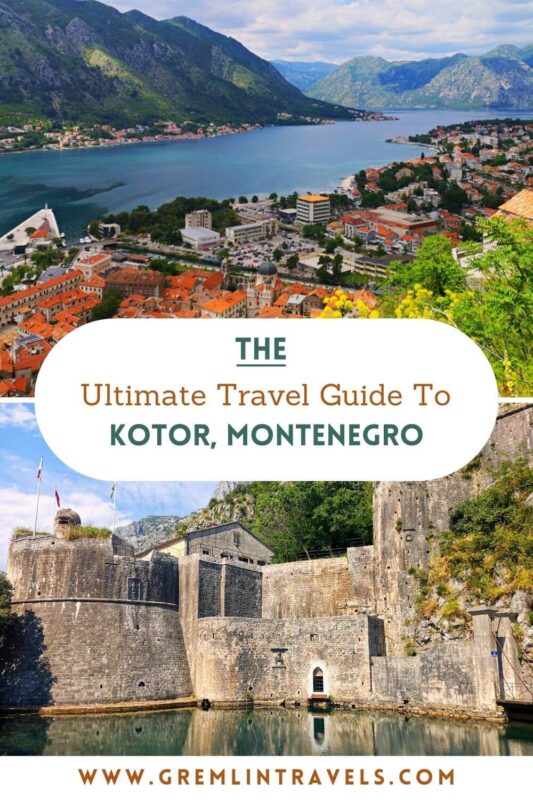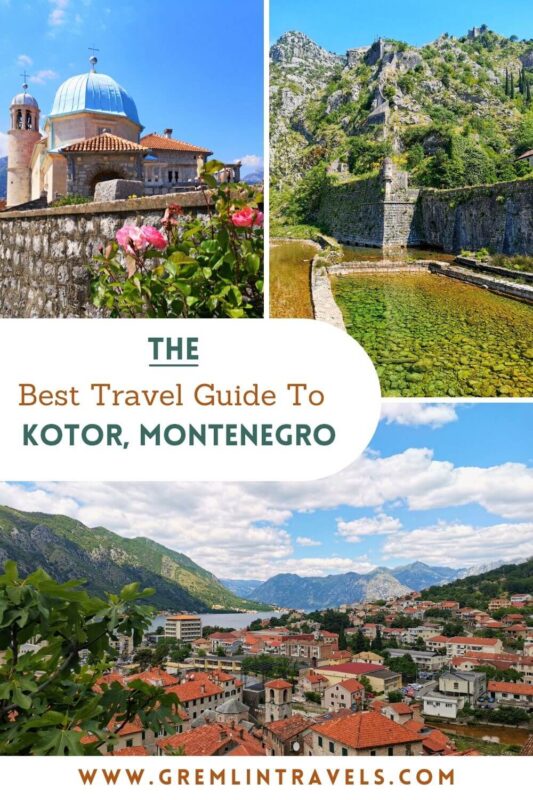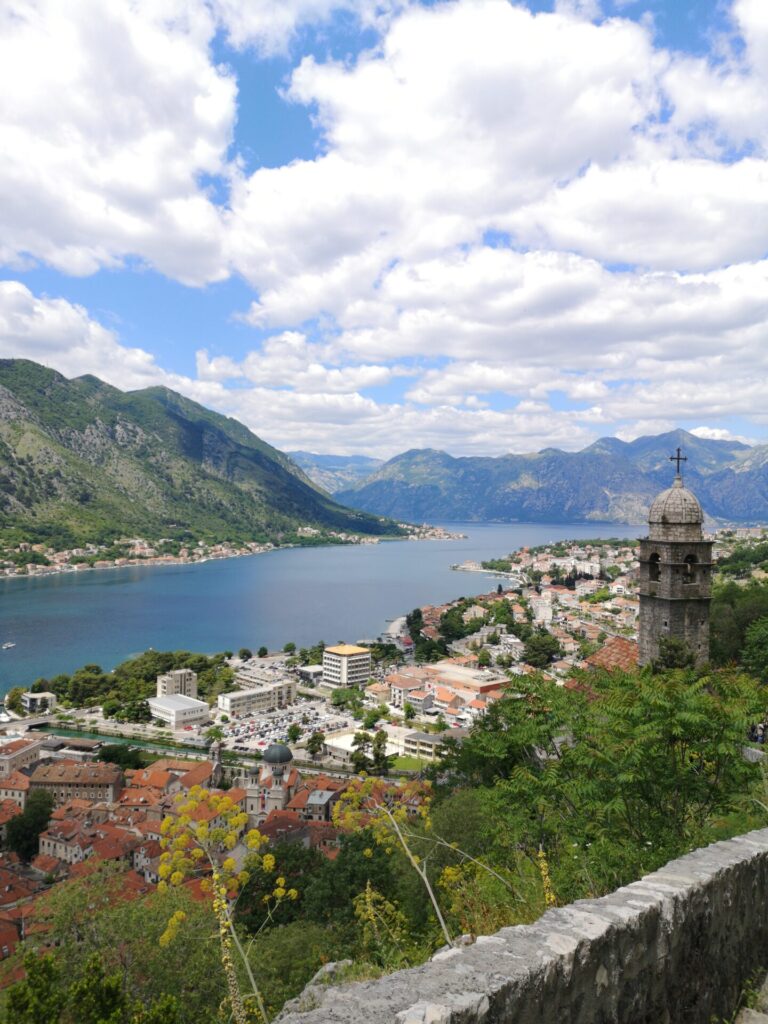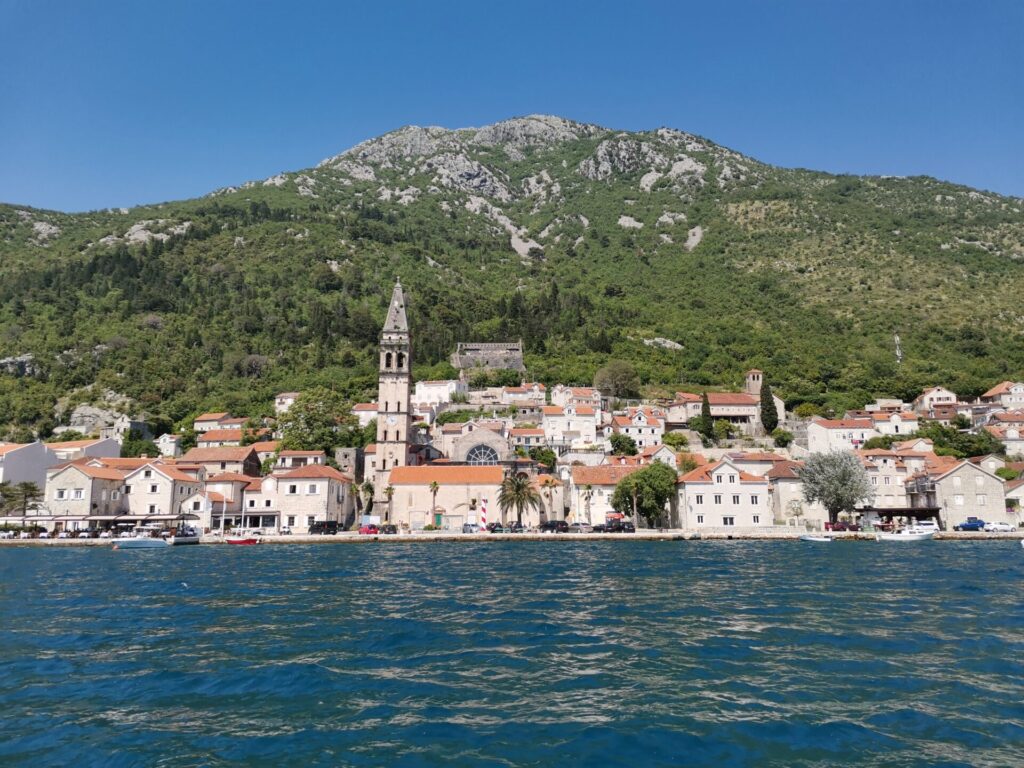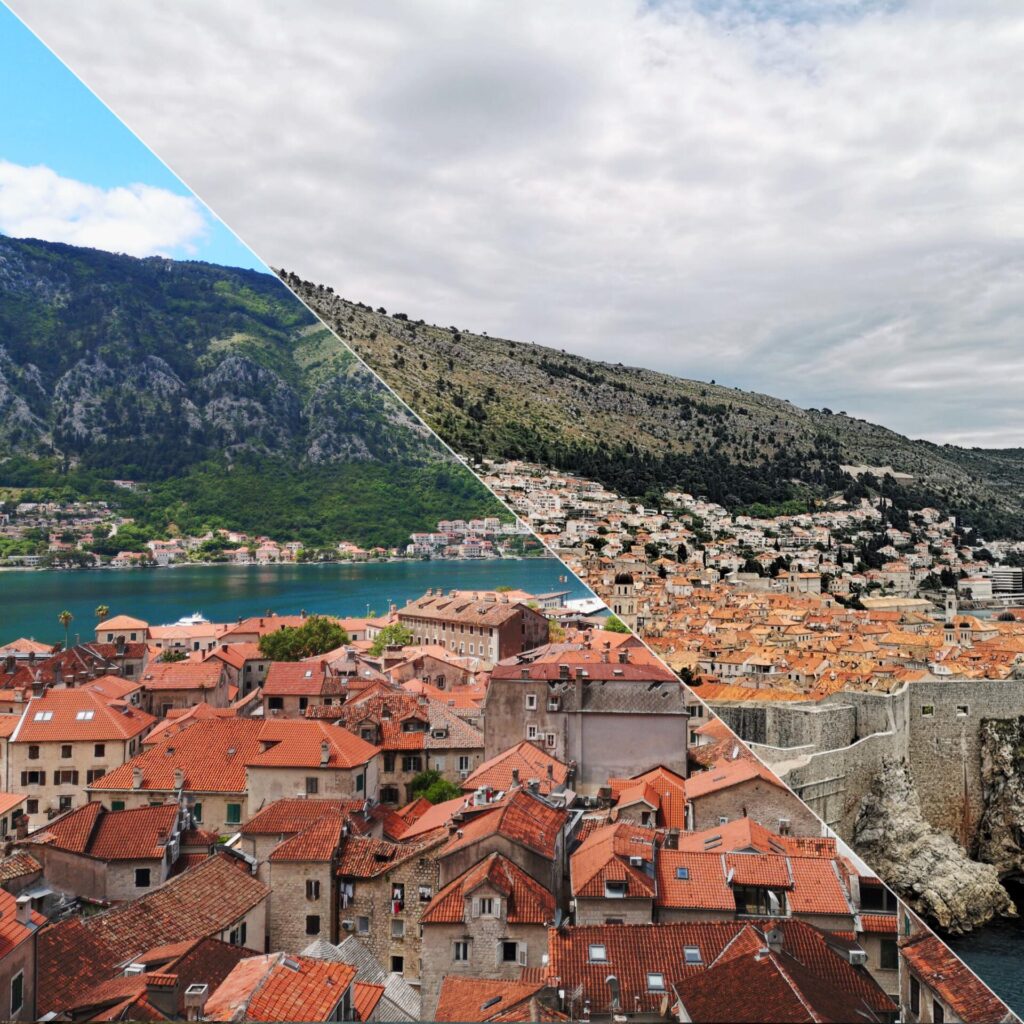Kotor
Travel Guide
Welcome to our Kotor travel guide, delving into this romantic, breathtakingly stunning town, set on the edge of the Bay of Kotor, Montenegro. If you’re looking for some of the best views in Europe, reasonable prices and a quaint old town then Kotor is the place to be.
This charming town sits peacefully on the picturesque Bay of Kotor, surrounded by black mountains and other small medieval villages. The views are truly spectacular and have to be witnessed in person to appreciate them. With plenty of restaurants, small shops, and a selection of bars, the Old Town keeps locals and travellers busy and the nightlife, especially at the weekend, buzzes throughout the walls of the Old Town. Alongside the healthy population of cats, which rule the streets, Kotor has a pleasant beach and an array of things to do and see which can keep, even the most restless traveller, busy for a few days.
Kotor Travel Guide Contents
Kotor Travel Guide
How to get to Kotor
Montenegro is a very small country and therefore tourists can often arrive at destinations, such as Kotor, from a variety of means and places. The most common arrival points for most tourists are from the closest airport to Kotor, Tivat Airport (TIV), a mere 8km from Kotor, the capital city airport, Podgorica Airport (TGD) or from the nearby Dubrovnik city in Croatia, usually by transfer from the city or Dubrovnik Airport (DBV). Both Tivat and Podgorica airports are small and although Podgorica is the capital, Tivat airport is the busier of the two, due to its location near tourist destinations in the country. Both airports cater to international flights and have a small selection of cafes and duty-free shops. During the peak season, Tivat airport can get uncomfortably busy for a small airport. Dubrovnik airport is larger, although still caters mainly to seasonal flights. These are the main transport options for getting to Kotor from the three airports:
Taxi from Tivat Airport – Several taxis are awaiting arriving passengers at Tivat Airport so getting a taxi is no problem. The journey from the airport to Kotor centre will take 10-15min and should cost no more than €25 ($30), although this is quite expensive and with some negotiation, you can pay in the region of €10-15 ($12-$18)
Transfer from Dubrovnik Airport/City – Depending on whether you start at Dubrovnik city or Airport, a booked private transfer to Kotor should cost around €80-€120 ($95-$140) and take anywhere from 1hr 30min to 2hr 30min, depending on what the queues are like at the border crossing. Book in advance and compare a few companies to secure a more reasonable price
Bus from Dubrovnik – Several bus companies run buses between Dubrovnik Bus Station and Kotor, ticket prices vary but cost in the region of €15 ($18) per person. The journey takes 2hrs+ depending on the queues at the border crossing
Transfer or Taxi from Podgorica Airport – The journey from Podgorica Airport to Kotor is approx 1hr 30min and should cost approx €70-€80 ($83-$95) in either a taxi from arrivals or a pre-arranged transfer. If you’re in a group of 4 or more then this option will work out on a similar budget to the below option
Public Transport from Podgorica Airport – This option is a little complex but is better for those on a budget. You can catch a bus from Podgorica Bus Station to Kotor for approx €7 ($8) per person, journey time 2hrs. To get to the Bus Station from the airport, you can either grab a taxi, costing approx €12 ($14.25) or take the train and walk 1km, which would only cost €8 ($9.50). The entire journey can take anywhere up to 3hrs, so this is not a great option for those short on time, but will save a substantial amount of money

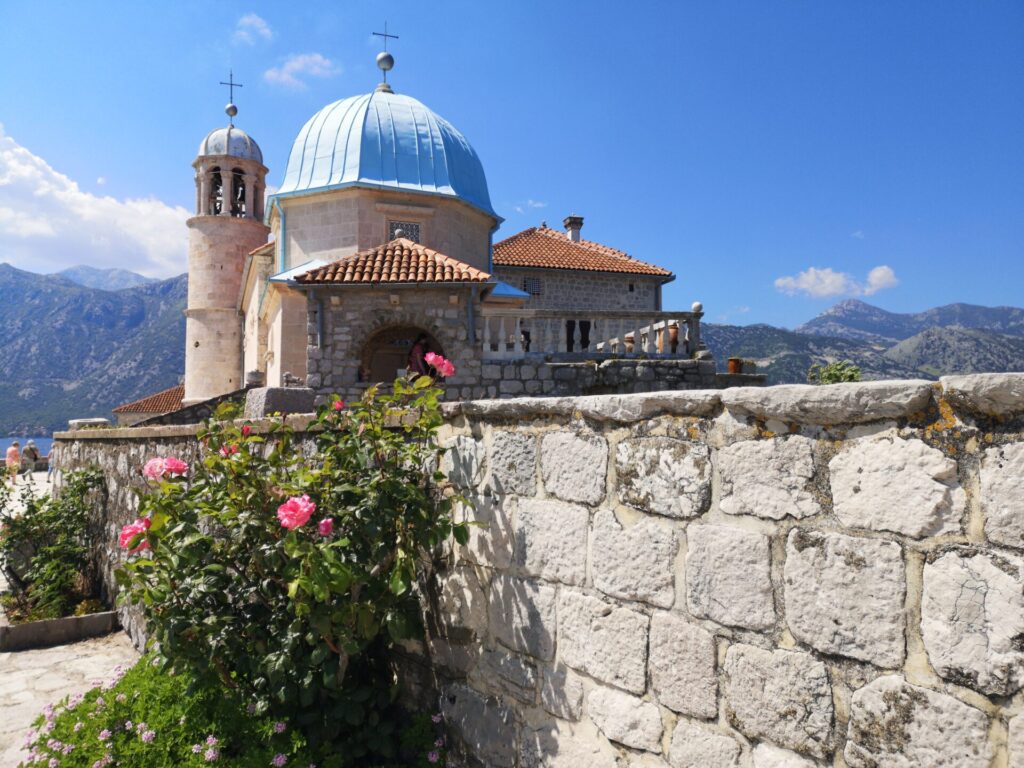
Areas to stay in Kotor
Kotor is a very small town so there are only two options of areas to stay, either in the Old Town or out of the Old Town. The Old Town is where most of the sights and action is and is also a much prettier area. Accommodation options including hostels, hotels and apartments are available in both areas. The beach, however, is out of the Old Town so if you’re looking to be closer to this, then this would be the best option. Either way, due to the compact size of the area, you won’t ever have to walk far to get to either end.
Accommodation in Kotor
Due to its popularity as a tourist destination within Montenegro, there are plenty of accommodation options to choose from in Kotor including hotels, apartments and hostels. Catering to both the budget and high-end traveller and everything in between. Here are some of our top picks of accommodation in Kotor:
Budget Option | Old Town Youth Hostel – Located within Kotor’s scenic old town, Old Town Youth Hostel is a solid budget option offering both dorm and private rooms with a shared lounge and kitchen
Mid-range hotel option | Palazzo Drusko Deluxe Rooms – Also located in Kotor Old Town, Palazzo Drusko Deluxe Rooms is a good mid-range hotel option that feels like a boutique hotel. Rooms are spacious and traditionally decorated and a shared kitchen allows guests to make breakfast or meals
Luxury hotel option | Boutique Hotel Astoria – Boutique Hotel Astoria sits within the walls of Kotor Old Town and offers guests beautifully decorated rooms with a luxurious touch as well as a superb breakfast offering and a restaurant on-site
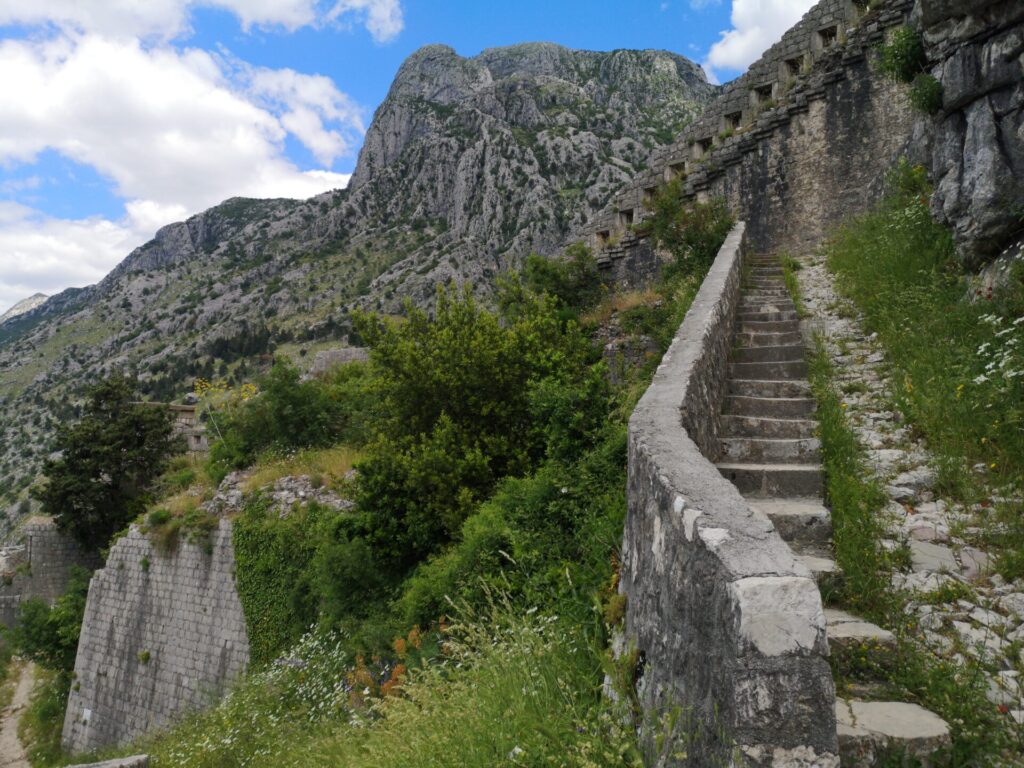
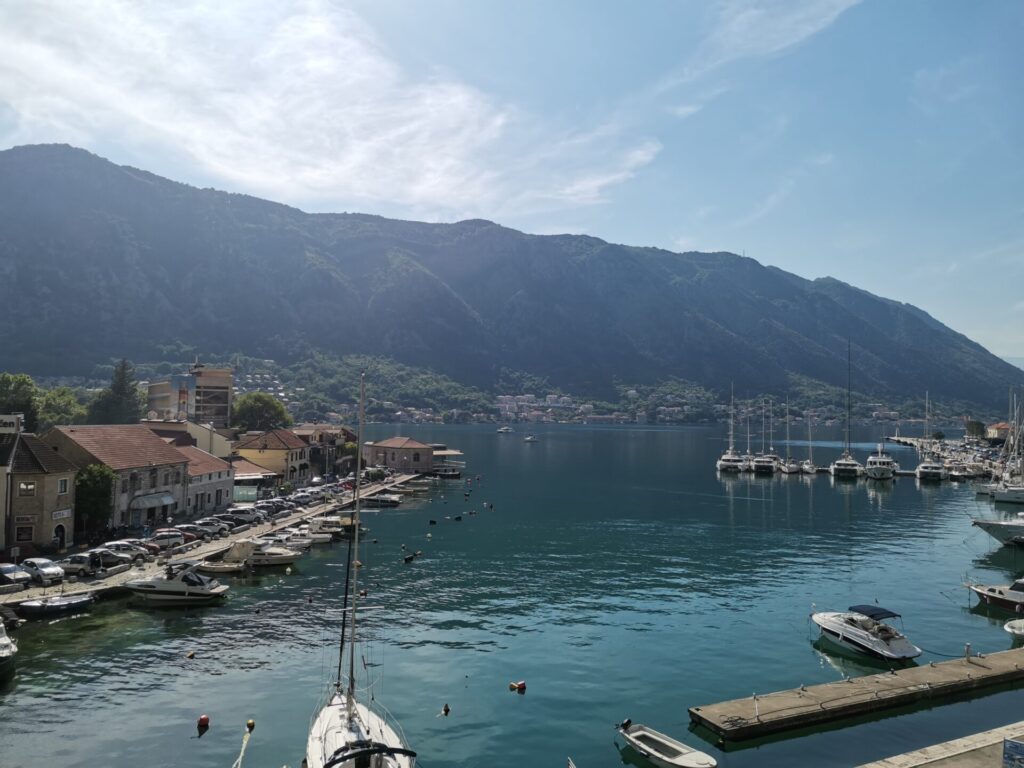
How to get around Kotor
As we’ve already covered, Kotor is a small town and therefore, can be easily explored on foot. The Old Town is pedestrianised and not accessible by car. Taxis are available but there are no ride-hailing apps, such as Uber, operating in Montenegro. Buses depart from the main bus station to nearby towns and villages such as Budva, and Podgorica as well as to other countries. The buses operating from Kotor to other towns within Montenegro are operated on a line called the Blue Line. If you are coming into Kotor from Budva, then you should expect to pay around €15-€20 ($18-$24) in a taxi. Buses are reasonably cheap, costing approx €1-€2 ($1.20-$2.40) from either Tivat or Budva into Kotor.
Things to do in Kotor
We don’t want to bore you with a list of everything to see and do in Kotor, we have a more extensive article that covers all the main Kotor attractions here. But if you’re looking for a quick guide to some of the best things to do in Kotor then here is a rundown of our top 5:
Bay of Kotor – At approx 28 kilometres long, we don’t suggest you see all of the Bay (although it’s all beautiful) but we advise taking in this truly breath taking scenery by walking along the waterfront in Kotor. The surrounding cliffs and mountains against the bay water and medieval towns make for a simply majestic view
St John’s Fortress – Located 280m above sea level, above Kotor Town, this fortress can be reached by climbing the 1350 steps at the back of the Old Town. It can be a little challenging for some but there is plenty of rest stops on the way with beautiful views. The entry fee is €3 ($3.50)per person, opening times are 8 am – 8 pm and you should allow approx 2-2.5hrs for the round trip
St Tryphon’s Cathedral – Situated in the heart of Kotor Old Town, this catholic cathedral is an iconic landmark of the town and worth entering to see the Romanesque interior. Entry inside is €2.50 ($3) per person
Our Lady of the Rocks – This small, artificial island is located in the Bay of Kotor and is one of the main attractions in the Bay. The small island is home to the Church of Our Lady on the Rocks and can be accessed by one of the many Bay of Kotor boat trips that depart from Kotor Marina
St Nicholas Church – This orthodox church is located in the Old Town and is free to enter
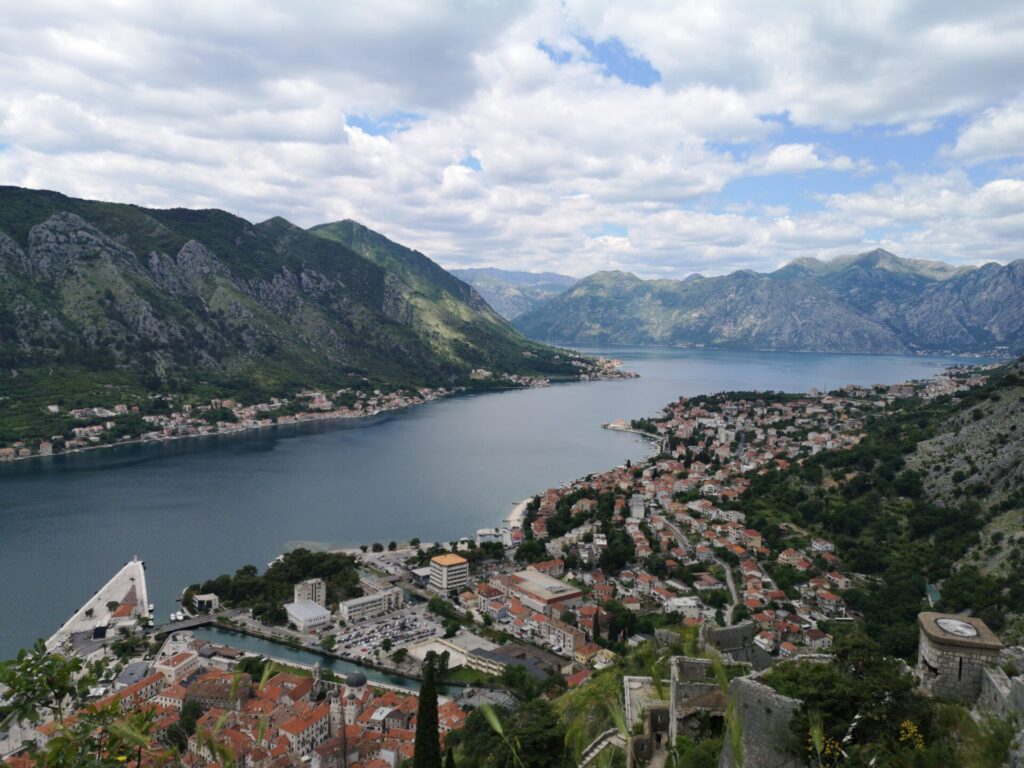
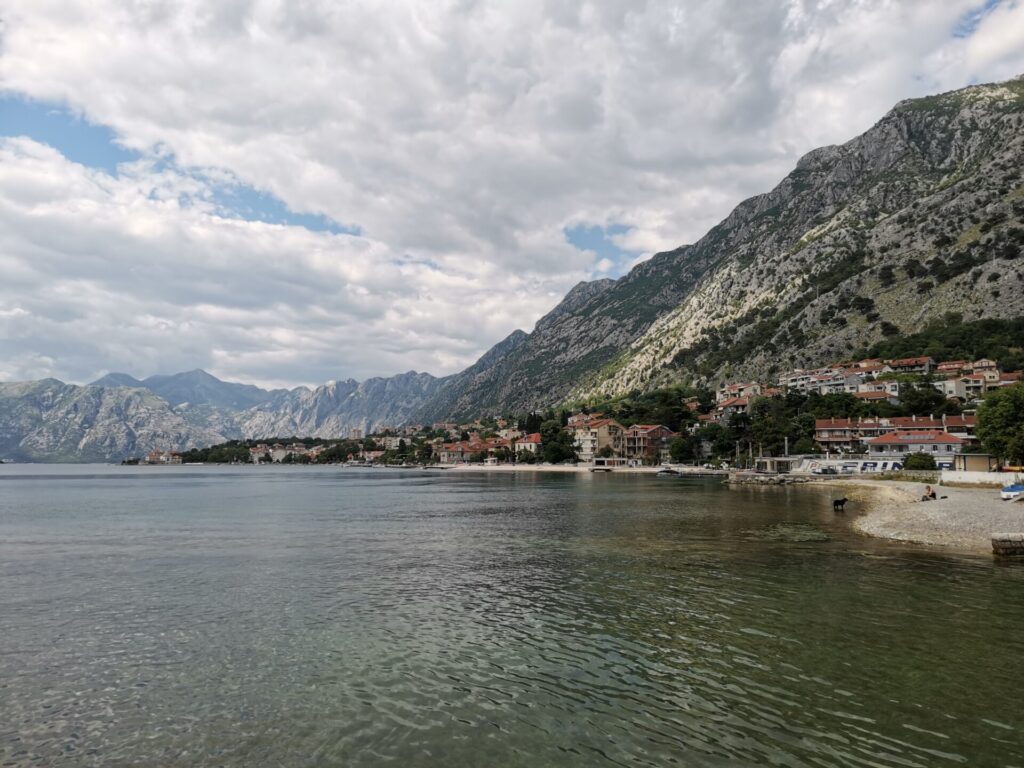
What to eat in Kotor
Despite being similar to the wider Balkan cuisine, food in Montenegro does vary and is vastly influenced by the different landscapes that the country is home to. Despite Kotor’s compact size, there are still around 200 restaurants, cafes and bars lining the beautiful old streets which serve up an array of foods including Montenegrin, Mediterranean and Italian. If you want to try some of the local and national dishes of Kotor and Montenegro, then here is what to eat in Kotor:
Njegusi Proscuitto – A must try when in Montenegro, this prosciutto is made in the village of Njegusi. Try as a sharing board with cheese and olives
Black Risotto – Common in Montenegro and along the Adriatic coast, this risotto dish comes with cuttlefish pieces and is black from the ink
Burek – A popular breakfast dish, these pastries are usually spiral-shaped and filled with potato, spinach, cheese or meat
Ispod Saca – A very traditional, hearty dish of slow-roasted meat (commonly goat, veal or lamb) with potatoes, carrots, onion, tomato and paprika
Cream Pie – This local dessert is light and fluffy and custard-based, it is delicious and a must-try when in Kotor
Money - Kotor Travel Costs
Despite not being a member of the EU, the currency in Montenegro is the Euro (€). Credit & Debit cards are widely accepted throughout Kotor and there are plenty of ATMs which accept foreign cards. A service charge is sometimes added to the bill, by way of handwriting a final amount including the tip at the bottom of the bill. If it is not included, and you are happy with the service then a tip of 5-10% is the norm and you can round up for taxis. Kotor is a very reasonably priced destination, suitable for both the budget and luxury traveller. Here’s a guide for what you can expect to pay in Kotor (per person) for:
A local draught beer – €2-€3 ($2.50-$3.50)
A coffee – €1-€3 ($1.25-$3.50)
A grab and go pastry – €1-€2 ($1.25-$2.50)
Budget restaurant meal – €5-€15 ($6-$18)
Mid-range restaurant meal – €15-€30 ($18-$36)
High-end restaurant meal – €35+ ($42+)
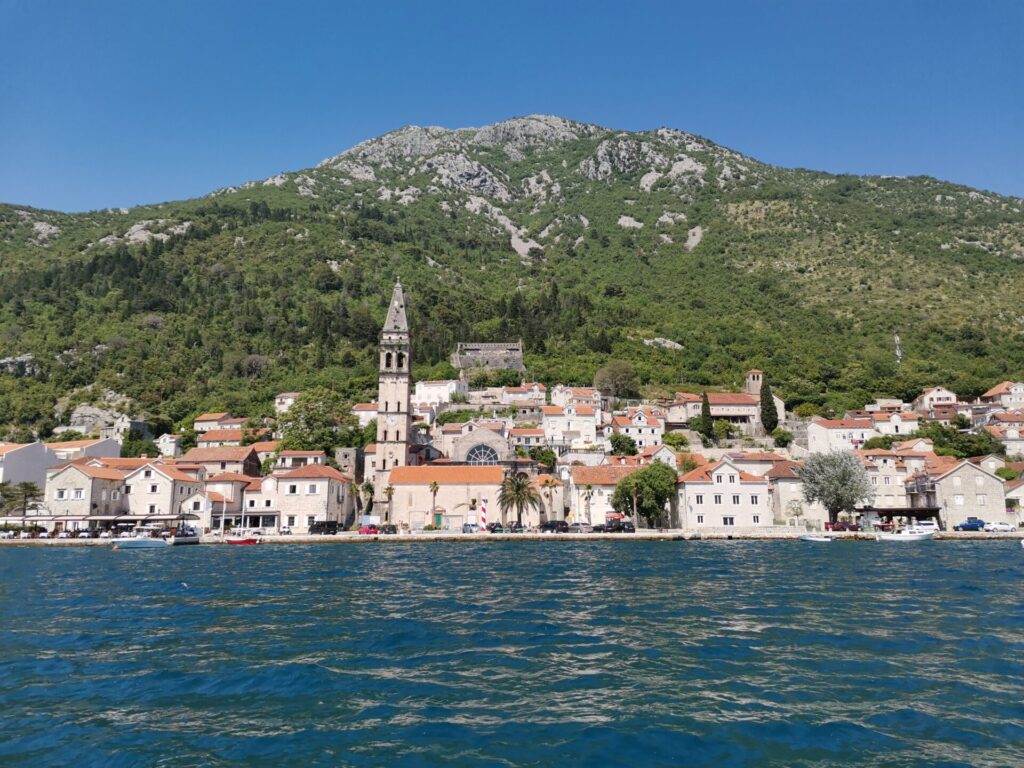
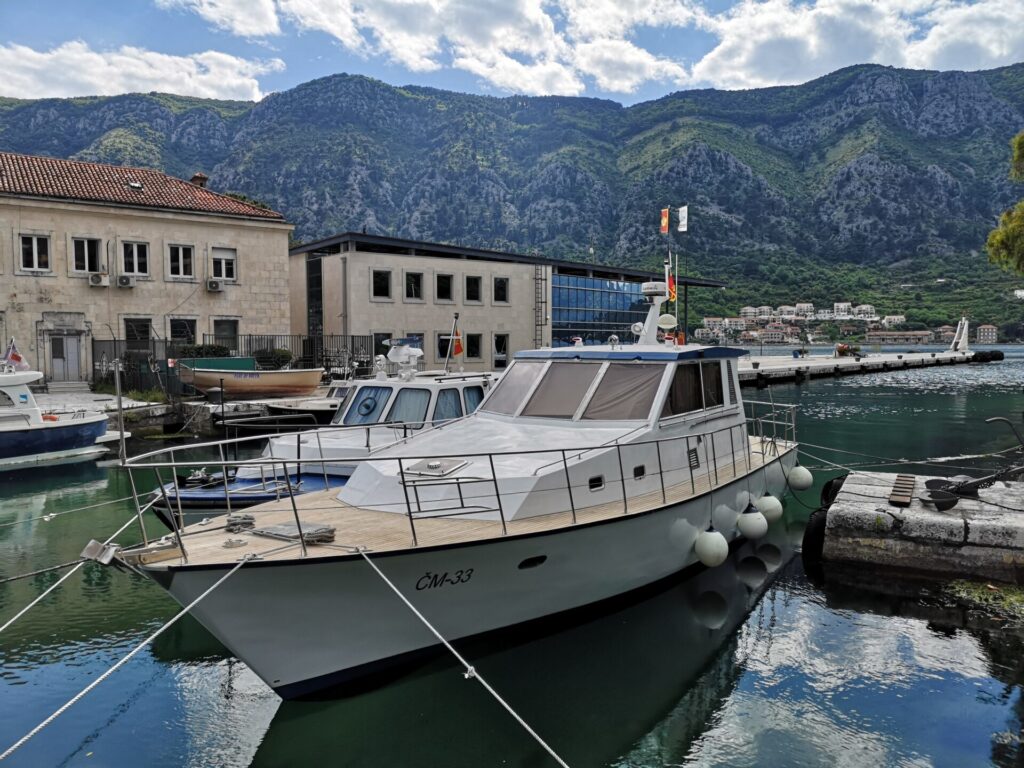
When to go to Kotor and for how long
The best time to visit Kotor is in either June or September when there is less rain and the weather is warmer. Kotor is small so works well for a 2-3 night trip, but you could tie this in with an overall longer trip to Montenegro.
Local language and phrases
Montenegro is a friendly country and, while the local language is Serbian, many of the locals are very accommodating in trying to speak English and other nearby local languages. However, we’d always advise learning a few local phrases and words out of respect and to help in those inevitable difficult situations. You can check out our list of useful words and phrases for Montenegro in our Montenegro travel tips.
Kotor travel tips
– Kotor is generally very safe and is suitable for lone travellers, including lone females
– The water is safe to drink
– If you require a PCR test during or at the end of your journey in Montenegro, then PCR and Antigen tests are available at Milmedika. They have locations in Tivat and Budva and can also offer a home testing service. Be sure to check test and entry requirements of where you are travelling to
Kotor travel guide written in July 2021
This site uses affiliate links. When you click on a link and purchase an item, we may be compensated on qualifying purchases. However, this is at no extra cost to you. See our affiliate disclosure for further information.
Kotor Travel Articles
Kotor Walking Tour Videos And Maps
Check out our Youtube Channel for more Montenegro walking tours, alongside walking tours and videos for lots of other destinations.
Kotor Bay Route
A walking tour video highlighting the sights along the Bay of Kotor and accompanying map showing the route we walked
Kotor Old Town Route
A walking tour video highlighting the sights in Kotor Old Town and accompanying map showing the route we walked
Pin this Kotor Travel Guide to save it for later!
